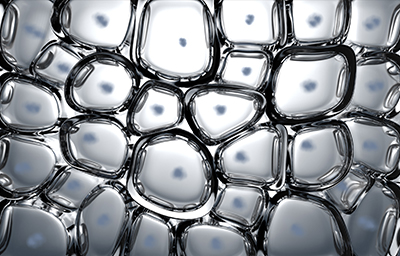View article
Are nanomaterials getting under your skin?
 A recent study has analysed existing research on whether nanomaterials used in consumer products and at workplaces are absorbed through the skin. The study calls for more comparable and high-quality data through well-organised and structured research programmes that follow OECD test guidelines.
A recent study has analysed existing research on whether nanomaterials used in consumer products and at workplaces are absorbed through the skin. The study calls for more comparable and high-quality data through well-organised and structured research programmes that follow OECD test guidelines.
Helsinki, 20 May 2020 – The study, commissioned by the EU Observatory for Nanomaterials (EUON), found that the lack of standardised, validated methods and the use of varying testing protocols makes it difficult to compare results and evaluate whether nanomaterials can penetrate the skin.
Based on the findings, nanomaterials rarely absorb through intact skin, except for silver that is likely to partly penetrate in ionic form. Silver is used for its anti-bacterial properties in textiles and can be found in other consumer products such as pharmaceuticals and cosmetics.
Some of the analysed studies suggest that absorption through damaged skin is higher than through intact skin.
A key recommendation for any new studies that aim to provide proof of absorption through the skin is to perform them using tests performed on tissue in external environments with minimal alterations to natural conditions (ex vivo), comparable to OECD Test Guideline 428, with human or porcine skin. Rodent skin should not be used due to differences in skin characteristics between rodents and humans.
The study covered experimental data including tests performed inside the bodies of living organisms (in vivo) and ex vivo studies. It looked at factors associated with test methodology that can affect absorption through the skin, for example: exposure conditions, different experimental set-ups, and methods. The effects of the characteristics of nanomaterials on skin absorption, including particle size and surface charge, were also analysed.
In addition to compiling relevant studies, the study looked at test guidelines and whether the results are available in a structured way, for example, following OECD harmonised templates.
The study was carried out for the EUON by RPA consortium of Triskelion and RIVM.
Background
Many products we use in our daily lives come into contact with our skin. Some, including cosmetics such as sunscreens, and textiles, use nanotechnology to improve their quality. This means our skin can also come into contact with manufactured nanomaterials.
This study looks at existing research to make recommendations for generating comparable and high-quality data to enable authorities to better regulate nanomaterials and companies to ensure their safe use.
The EUON aims to increase the transparency of information available to the public on the safety and markets of nanomaterials in the EU. A key aim of the observatory is to create a one-stop shop for information, where EU citizens and stakeholders including NGOs, industry, and regulators can find accessible and relevant safety information on nanomaterials on the EU market.
The EUON uses a part of its funding to carry out studies on different aspects related to the safety and uses of nanomaterials in the EU.
Further information
